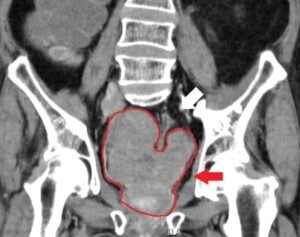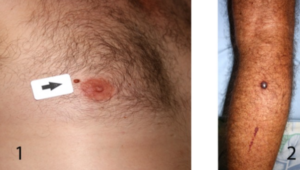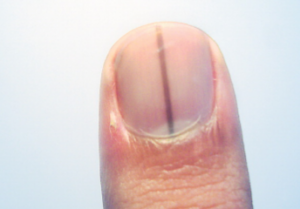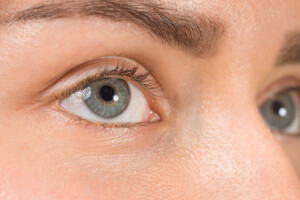Excessive sitting, especially for heart attack survivors, is so dangerous that it’s been dubbed the “new smoking.”
Here’s how to offset this danger if you’ve had a heart attack.
It’s so easy to spend 14+ hours a day off your feet without even realizing it.
People who spend more than 14 hours a day sitting or otherwise being inactive may be putting themselves at much higher risk for heart problems or death in the year following treatment for heart attack symptoms.
This warning is according to findings published in Circulation: Cardiovascular Quality and Outcomes (2025), a journal of the American Heart Association.
The research builds on earlier work by the same team, which had already shown that those recovering from a heart attack were often sedentary for up to 12 or 13 hours per day.
In this latest study, researchers used wrist-worn accelerometers to more accurately track physical activity and sedentary time in over 600 adults after they were discharged from a New York City hospital following treatment for a heart attack or chest pain.
Accelerometers Are a Useful Tool
These accelerometers recorded movement in all directions — forward, backward, side-to-side and vertically.
This gave a more precise look at how much time people were actually active or still – as in seated – without relying on memory or self-reports.
Participants were observed for a median period of 30 days after their hospital stay.
The data collected was then compared with medical records, patient follow-ups and public records to assess their health outcomes one year after discharge.
The Striking Results: Inactivity Kills
One of the most striking was that people in the least active group — those who engaged in the smallest amount of movement — had 2.58 times the risk of experiencing another heart issue or dying within a year, compared to those in the most active group.
Activity levels varied significantly between groups, and even modest increases in movement made a substantial difference in outcomes.
The most active participants averaged about 144 minutes of light activity, 25 minutes of moderate-to-vigorous activity, 11.7 hours sitting and 8.4 hours of sleep per day.
Those in the least active category had only about 82 minutes of light movement, less than three minutes of moderate-to-vigorous exercise, 15.6 hours of sedentary time and 6.6 hours of sleep each day. (Sleeping less does not mean one is more active!)
People in the middle range fell between those two extremes, with about 109 minutes of light activity, 11 minutes of moderate-to-vigorous activity, 13.5 hours sitting and nearly eight hours of sleep.
Swapping Sedentary Time with Other Behaviors
Replacing 30 minutes of sitting with 30 minutes of moderate-to-vigorous activity (e.g., brisk pedaling or walking, a fitness class, a weight workout) reduced the risk of heart events or death by 61%.
Substituting with 30 minutes of only light activity reduced the risk as well: by 50%.
Even replacing that time with an extra half-hour of sleep lowered the risk by 14%.
Lead author Dr. Keith Diaz of Columbia University, an expert in behavioral medicine and exercise science, explains in the paper the importance of this approach.
While current guidelines encourage regular exercise after a heart-related hospital visit, this study focused on whether simply sitting too much could be harmful, regardless of formal workouts.
The findings suggest that the amount of time spent inactive may be just as important to monitor as is structured exercise routines.
Dr. Diaz says that while formal exercise programs remain important, the study shows benefits can also come from simply reducing sitting time — even without engaging in strenuous workouts.
What if a heart attack patient can’t move vigorously?
In such cases, increasing light physical activity — such as slow walking, casual pedaling, gentle yoga, strength training with tension bands or standing activities — can still provide real benefits.
The paper points out that even light activities (more examples: water aerobics, a beginner exercise class), can cut the risk of future cardiac problems by more than half.
As simple and obvious that all of this sounds, there are many heart attack survivors who literally spend 14+ hours a day in some type of seat.
Another point to consider is that if you’ve had a heart attack, any activity that you’d been doing all along prior (e.g., housework, walking the dog) needs to be viewed as a constant in the equation, rather than as a variable.
- Creating a variable of physical activity is crucial!
What you need to do is add in more activity – that is, a time slot dedicated to physical activity that you were not doing prior to your heart attack.
In addition to the examples already cited, here are more: adding 20-30 minutes to the dog walking, taking up tai chi or yoga, taking up strength training with machines, swimming laps and buying a stationary bike and spending time on it every day.
The Study Had Limitations
Sedentary behavior was defined solely by how little a person moved, which could mean that certain low-energy but non-sedentary activities were misclassified.
Additionally, there was no data on whether patients were sent home, referred to cardiac rehabilitation or placed in skilled nursing facilities, making it harder to judge how different recovery environments affected results.
Even with these limitations, the study supports a simple message: reducing time spent sitting — even if only replaced by light activity — can significantly lower the chance of heart problems or death after a hospital visit for a heart related issue.
Buy a Treadmill Desk for Home Computer Use or Watching TV
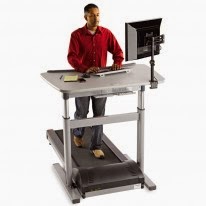
I’ve had a treadmill desk for 14 years now.
It’s amazing how quickly my daily step count could add up by walking on this device while conducting computer work (including watching YouTube videos).
You can set the speed at 1 mph and the incline at 8% and get a mild respiratory effect, all while passing the time quickly as you read stories on your favorite news site.
Stationing a treadmill in the TV room will also help you get in an easy 30-60 minutes of extra activity while you watch your favorite shows.
Treadmill desks and regular treadmills come in so many different makes and models, you’ll surely be able to find one that suits you just perfectly.
 Lorra Garrick is a former personal trainer certified by the American Council on Exercise. At Bally Total Fitness, where she was also a group fitness instructor, she trained clients of all ages and abilities for fat loss and maintaining it, muscle and strength building, fitness, and improved cardiovascular and overall health.
Lorra Garrick is a former personal trainer certified by the American Council on Exercise. At Bally Total Fitness, where she was also a group fitness instructor, she trained clients of all ages and abilities for fat loss and maintaining it, muscle and strength building, fitness, and improved cardiovascular and overall health.
.














